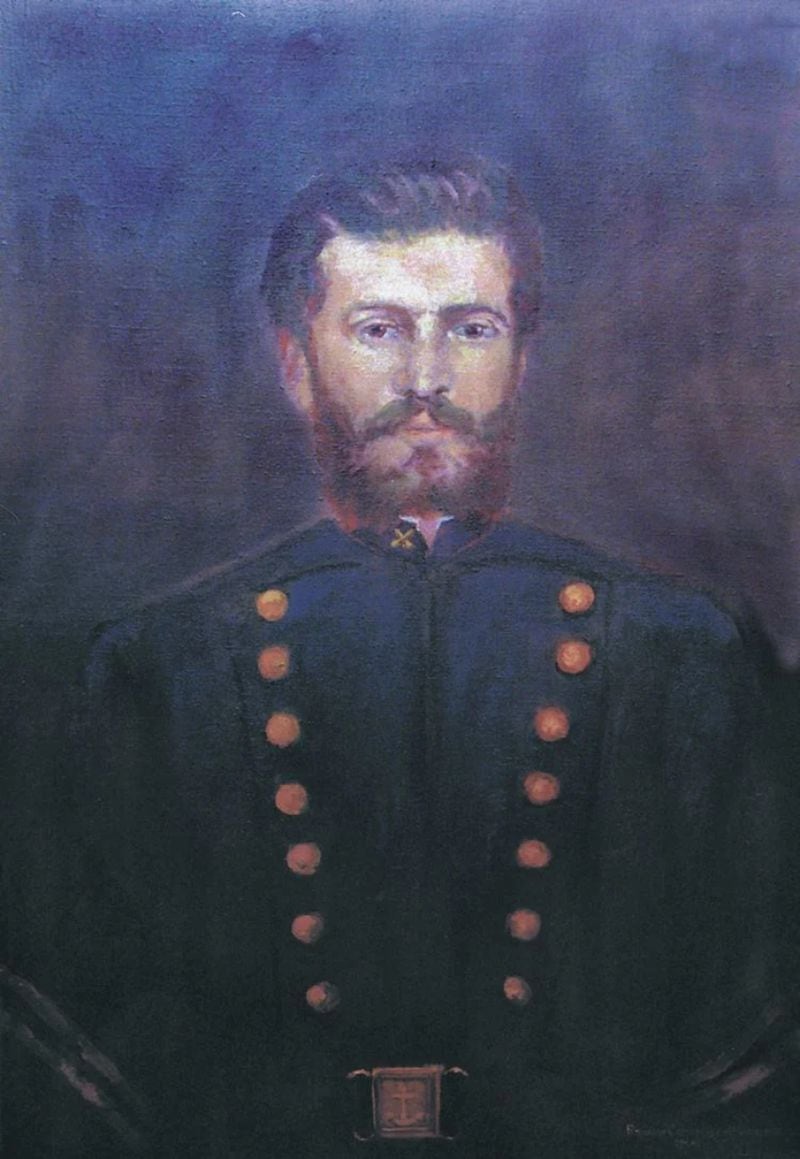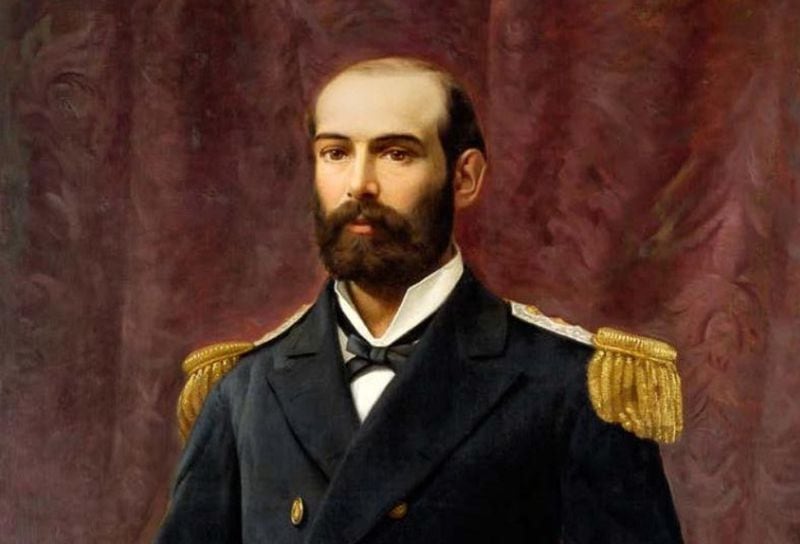He is considered one of the heroes of Iquique, but there is little truthful data on the life of Juan de Dios Aldea. He had an ascending military career, which allowed him to rise to the rank of master sergeant in a few years. During the naval battle of May 21, his mission was to guard the flag, which is why he was the only one to succeed in hearing Prat’s order to embark. Here is a review of his story.
It is probably one of the moments in the history of Chile most ingrained in the collective memory when it comes to recounting the details of the naval combat of Iquique, perhaps one of the key milestones of the Pacific War. When the Peruvian monitor Huáscar’s first strike took place on the Chilean corvette Esmeralda, Captain Arturo Prat Chacón gave the cry of “boarding boys”. But because of the hubbub of the moment, He was only followed by Sergeant Juan de Dios Aldea and apparently another sailor who failed to gain a foothold on the ship.
Lieutenant Luis Uribe Orrego, who took command of the ship after Prat’s death, described the moment in his May 29 account of events to the Navy General Command. It was published in the newspapers of the time, which amplified its impact and helped create the heroic narrative of what happened very quickly. “Unfortunately, the noise produced by the entire battery when firing the Huáscar, prevented from hearing the voice of our brave commander; And of those who were on the stern with him, only the sergeant was able to follow him. writes Uribe. Once on the deck of the Huáscar, Captain Prat and brave Sergeant Aldea fell dejected. While the first perished, the second was seriously injured and died a few days later.

A little-known sergeant
Despite his participation at a key moment in the fight, little is known about the life of Juan de Dios Aldea Fonseca . Strictly speaking, he was second sergeant of the Marine Artillery Regiment, in which his two brothers, Ramón and Eduardo, were also enlisted. “The marine artillery regiment depended on the army, although it was not in its organization, but assimilated to that of the navy “, comments Rafael Mellafe, military historian and specialist in the Pacific war.
“We know that Aldea was born in Chillán, a town far from the sea, but in July 1872, At the age of 19, he presented himself at the post office that the navy had in Chillán. , entering the battalion of Valparaíso as a recruit -says Mellafe-. Later, he appears as a soldier in the Marine Artillery Battalion (later Regiment). What motivated you to join the Navy? We do not know it. One could assume that he followed the example of his brothers or that the desire to be a soldier vibrated in the soul of young Juan, but these are only conjectures”.

From there, Aldea began an ascending military career. “On May 11, 1874, he was promoted to 2nd corporal and became a member of the recruit instructors’ group,” Mellafe said. This is not minor information since it indicates that Aldea was well regarded by the command. On January 1, 1876, he was promoted to 1st Corporal and married Remigia Segovia, who gave birth to her only son. In 1877, he obtained the rank of 2nd sergeant. It can be seen that Aldea’s rise from private (1872) to master sergeant (1877) was rapid, indicating again that he was committed to his profession and that this commitment was appreciated by the command”.
This is how he is part of the crew of the Esmeralda. The curious fact is that his inclusion happened on the same day that the Chilean government declared war on its allies Peru and Bolivia. “He arrived at the garrison of the corvette Esmeralda on April 5, 1879 and His duties were the classics of a sea sergeant, i.e. training his crew, guarding the stern of the ship but at no time did they take part in purely maritime work,” explains Mellafe.
Not much else is known about his personality. “Third parties indicate that he was a humble and quiet man, removed from the noise and affection of his wife and son . Concerned by her mother’s anguish at having 3 children in the war, we know of the existence of at least one letter from Juan to her mother in which he reassures her, ”explains the historian.

The historian specifies that the specific mission of the sergeant within the framework of the marine artillery was very clear. “In all the navies of the world at the time (and before too), when you went into combat A special guard detached from the flag which was hoisted on the awning of the ship, this in case a sailor had the bad idea to “lower the flag” in sign of surrender. They were also there so that in case of boarding, protect the flag from falling into enemy hands.
This explains why Aldea heard Prat when he shouted the order to board the Huáscar. “On May 21, 1879, Aldea was with part of the crew of the marine artillery, on the quarterdeck of the Esmeralda fulfilling the function already mentioned and next to Captain Prat”.
Once on the monitor’s deck, the sergeant advanced on the starboard side, but was cut down by gunfire, apparently mauling his limbs. “Aldea was very seriously injured after the fight and with several hemorrhages. In the documents which indicate that an arm was amputated, some indicate that it was the arm and the leg and others do not say anything. Mellafe said. What we do know is that Aldea was dropped off at the passenger dock in Iquique with the bodies of Prat and Serrano. A merciful hand rushed him to the hospital, but apparently his injuries were so bad there wasn’t much else to do. Thus, he died on May 24, 1879, the very day he was 26 years old.
Sergeant Aldea’s remains were buried the next day in a mass grave . Some time later, in June 1881, when the war was already concentrated in the central highlands of Peru, the body was exhumed. Until today, he rests in the crypt of the Monument to the Heroes of Iquique in Valparaíso.
Today, the equivalent of the regiment to which Aldea belonged is the Marine Corps. “Over the years, the Marine Artillery Regiment has undergone a mutation -Mellafe details-. Thus, in 1903, it drifted towards the coastal artillery regiment, this time dependent on the navy. On March 3, 1964, the corps was reorganized and renamed Marine Corps.
Continue reading in Worship
Source: Latercera
I am Robert Harris and I specialize in news media. My experience has been focused on sports journalism, particularly within the Rugby sector. I have written for various news websites in the past and currently work as an author for Athletistic, covering all things related to Rugby news.


